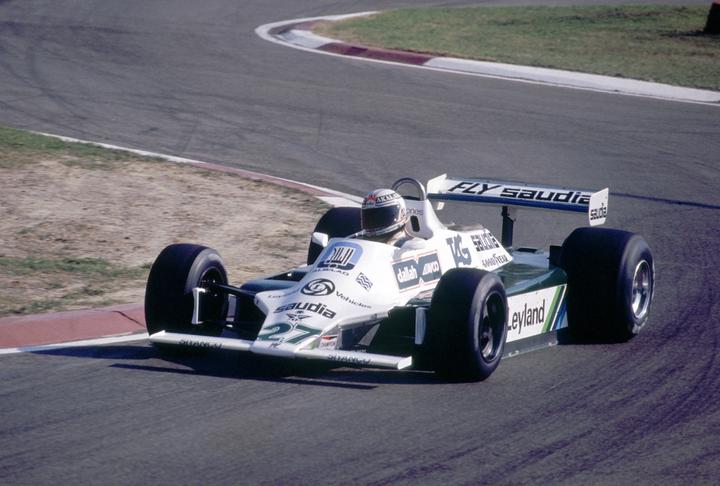In Formula 1, driver numbers have played a unique role throughout the sport's history. These numbers don’t just help identify drivers on the track, as they have also become an iconic part of the sport’s branding.
The rules relating to driver numbers have changed significantly over time, from being handed out at random to a major revision in 2014 where the drivers themselves had their say.
This is an introduction to driver numbers in Formula 1…
Early Years (1950s–1970s)
When Formula 1 arrived in 1950, driver numbers were assigned purely on a race-by-race basis, with no standardised system across the early seasons.
Typically, numbers were decided by each individual race organiser and often reflected the team's entry order or the driver's position from previous races.
There was no fixed connection between a driver and their number like we see today, and this ad-hoc system continued for several decades.
As we entered the early 1970s, numbers began to be assigned for full seasons, though they were still linked more to the teams than to individual drivers. For example, teams retained numbers based on their performance in the previous year's Constructors' Championship.
Our early years were spent running the numbers 27 and 28...
Climb the leaderboard!
Will you be the quickest Williams fan? Play Circuit Breaker to find out...
Permanent Numbers for Teams (1974–1995)
After a trial in the latter half of the 1973 Championship, the following year saw a more consistent system was introduced.
Initially based on the 1973 Constructors' standings, No. 1 was allocated to the World Drivers' Champion, and the only way numbers moved about was through the changing of the team for whom the World Champion drove for, or with a reallocation of spare numbers.
For example, when we entered the sport in 1977, we were allocated the number 27 for our first car, and later the number 28 for our second.
When Alan Jones claimed our first Drivers’ title in 1980, we were assigned the numbers 1 and 2 for the 1981 campaign, with Ferrari (the team with the previous champion) taking our 27 and 28.
As we didn’t win the Drivers’ in 1981, we were reallocated the next available numbers, 5 and 6, vacated by the champions that season, Brabham.
This is how the number 5 became synonymous with Williams and the 27 and 28 became an equally iconic car-number pairing at Ferrari.
One oddity of this particular generation of numbers came when the reigning Drivers’ World Champion left the sport, the reigning Constructors' Champions would take the numbers 0 and 2, which was the case for us in both 1993 and 1994.
'Red 5' is an iconic number-car pairing.
Numbering Revisions (1996–2013)
After just over two decades, it was decided that there should be a simplification of the system in 1996.
The reigning World Champion would still use number 1, their teammate would get number 2, and the following numbers were assigned based on the previous year’s Constructors' standings.
One significant detail was that the driver who won the title could move to another team and still use #1.
The best way to display this rule worked came in 1997. The previous season’s World Champion, Damon Hill, had departed Williams and joined Arrows.
Having been formed out of the Ligier team, Arrows had been due to run the numbers 11 and 12 for 1997, but with Damon on the team, they took 1 and 2 instead, whilst Williams took 3 and 4.
This system remained relatively stable throughout the late 1990s and 2000s. However, drivers still had little control over their numbers, and there was little personal connection between drivers and numbers, except for the iconic use of #1 by the defending champion.
Make it yours
Pick a helmet and number to display your Atlassian Williams Racing fandom to the world!
The 2014 Rule Change
A significant change came in 2014 with the introduction of permanent driver numbers, allowing drivers to select a number to use for their entire career in Formula 1.
This rule was implemented to increase the personal branding of drivers and allow fans to identify their favourite drivers by their number across multiple seasons.
Drivers were allowed to choose a number between 2 and 99, which would remain theirs for the duration of their Formula 1 career. If they left the sport at any stage, their number would be reserved for two seasons.
The number 1 is still reserved for the reigning World Champion, though drivers are not obligated to use it.
Since the 2014 change, driver numbers have become a key part of driver branding and fan identification.
Make your Pit Wall Predictions
You can change your answers right up until the formation lap on Pit Wall Predictions, presented by Gulf
Related Tags:
Powered By
© the Williams Group, under licence to Williams IP Holdings LLC
Williams Grand Prix Engineering Limited is a company registered in England and Wales under company number 1297497.
Its registered office is at Grove, Wantage, Oxfordshire, OX12 0DQ
Powered By








